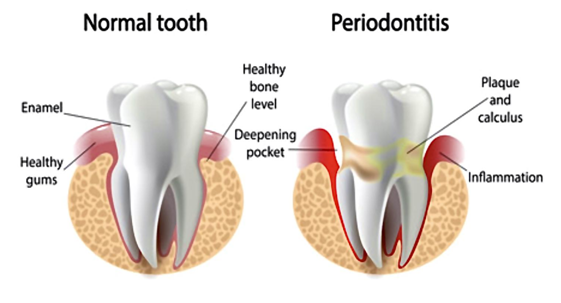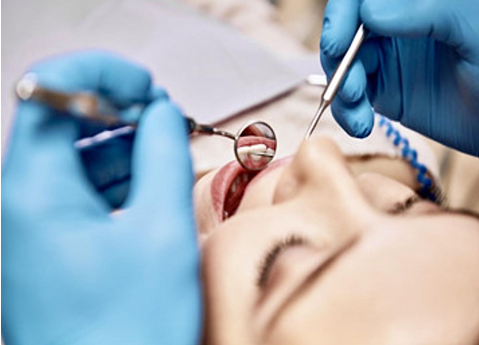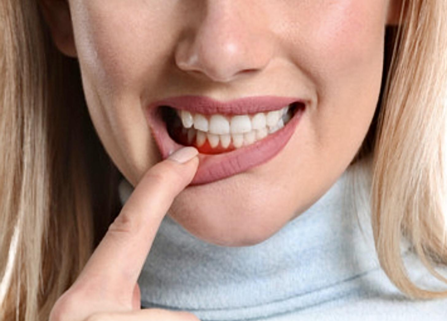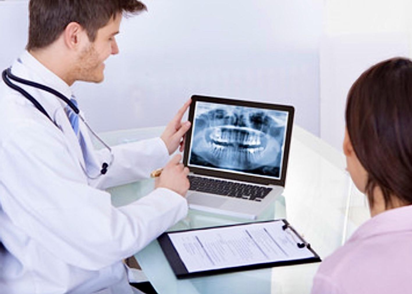Periodontal disease is a gum disease. In particular, it is an infection of the tissues around the teeth. In its early stages, it is called gingivitis.Usually, periodontal disease is caused by poor hygiene, which allows the plaque, a bacterial-caused sticky coating, to build up between and on the teeth and harden. In the advanced phase, it can lead to gum bleeding ulcers; chewing tenderness and even tooth loss.
When periodontal disease affects the bone and the supporting tissue, it is called periodontitis and is characterized by the formation of space between the tooth and the gums.
Although most of the elderly on the planet are affected by gingivitis, fortunately it does not always develop into periodontal disease. The progression of the disease is influenced by a number of factors, which include poor oral hygiene and genetic predisposition.

One of the obstacles to early detection of periodontal disease is its "quiet" nature. Thus, a condition that does not cause pain can progress unnoticed. In the early stages bleeding gums while brushing your teeth may be the only sign.
When the disease begins to progress and the gums worsen, the bleeding may stop and thus clear the obvious signs. In most cases, periodontal disease is affected by treatment and its progression can be successfully stopped.
Reasons
Our mouths are full of bacteria and constantly form a sticky, colorless plaque between the teeth. Brushing and using dental floss will help reduce the plaque, but only a professional dentist or orthodontist can remove it.
There are a number of risk factors for gum disease, but smoking is the most significant of them. Smoking can also make gum disease treatment unsuccessful.
Other risk factors include:
- hormonal changes in girls and women
- diabetes and medicines that reduce the flow of saliva
- some diseases, such as AIDS and medicines used to treat it.
Symptoms
Some of the symptoms of gum disease include:
- Bad breath that does not disappear
- Dark red and swollen gums
- Sensitive or bleeding gums
- Chewing pain
- Shaking teeth
- Sensitive teeth
- Teeth stripping from gums
Diagnosis
When visiting the dentist, he will do the following:
Examine the gums and note any signs of inflammation.
- Will use a small tool to check and measure all pockets around the teeth.
- With healthy gums the depth of these pockets is usually between 1 and 3 millimeters. This pocket depth test is usually completely painless.
- Will do an X-ray to see if there is bone loss.
- She will want to know everything about your medical history so that she can identify the conditions or risk factors (such as smoking or diabetes) that may be causing your gum disease.
The dentist may refer you to a periodontist who is a specialist in diagnosis and treatment of gum disease.
Treatment
The main purpose of treatment is to control the infection. The number and types of treatments will vary depending on the severity of the disease. Each type of treatment requires that the patient maintain daily care at home, such as good oral hygiene. The dentist may also suggest changing certain habits, such as quitting smoking,as a way to improve your treatment results.
Ways to treat Ayurveda periodontal disease
Vitamin C
Vitamin C deficiency in your body can lead to periodontal disease. Vitamin C is a well-known antioxidant and is required for effectiverepair of connective tissue and bone regeneration.
Vitamin C is readily available on the market as a dietary supplement, but is also found in various foods such as kiwi, oranges, grapefruit, broccoli, strawberries, mangoes, peppers, papaya, Brussels sprouts and many more. Increase your intake of these fruits and vegetables, which will help strengthen your body.
Tea tree oil
Tea tree oil is a well-known antibiotic that helps treat periodontal disease. Brushing your teeth twice a day with it will help reduce inflammation and soothe your gums.
Turmeric
Turmeric teeth brushing can also be a very effective treatment for periodontal disease. Turmeric contains compounds that have very good anti-inflammatory properties and thus help soothe gums and remove plaque. Use warm salt water to rinse the turmeric. Salt will also help * kill the bacteria.
Bicarbonateof soda
Soda is a natural cleanser that can remove plaque from your teeth. Brushing your teeth with bicarbonate of soda every day, instead of toothpaste, will help keep your teeth clean, as well as gums and the entire oral cavity. Soda also has anti-inflammatory properties and will help soothe inflamed gums and reduce their bleeding.
Ayurvedic mouthwash recipe
This Ayurvedic recipe is prepared at home. It is cheap, safe, without side effects and can be used by children.
How is it done
Put about 40-50 grams (8-10 tablespoons) of triphal powder in one liter(about 4 cups) of boiling water until reduced to 250 ml (1 cup). When cool, drain and place the water in a clean glass bottle. Use 20-50 ml (2-3 tbsp) of it to rinse your mouth after washing, up to three times a day.
Benefits
Trifala is a particularly valuable preparation in the prevention and treatment of diseases of the mouth, such as bleeding gums, caries, gingivitis and stomatitis. It prevents acid buildup and plaque formation on the tooth surface, thus preventing further * demineralization and degradation of the tooth enamel.







0 Comments